
All categories
Featured selections
Trade Assurance
Buyer Central
Help Center
Get the app
Become a supplier

(2452 products available)
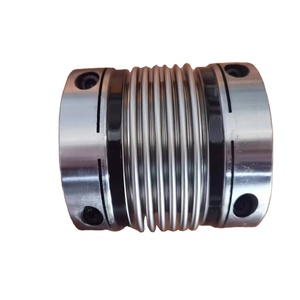






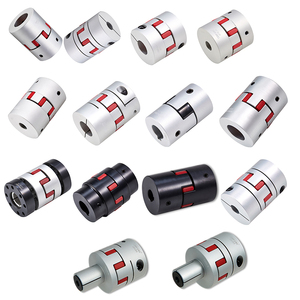

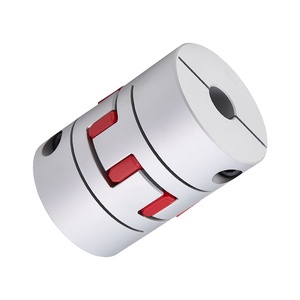




















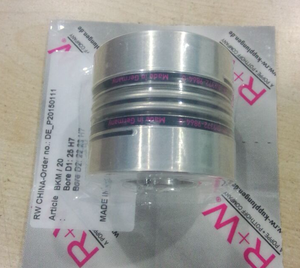


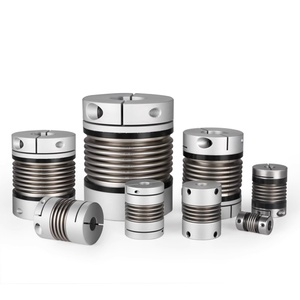





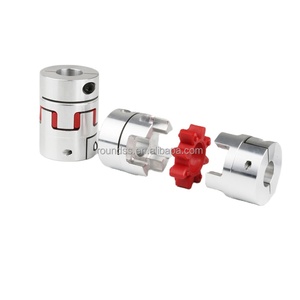

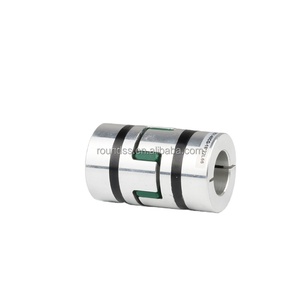



Couplings serve diverse purposes. Consequently, there exists a slight variability in their design, material makeup, and size. The subsequent elaboration on the types of R W couplings emphasizes their distinctive qualities.
The strength and longevity of an r w steel coupling stems from the steel's capacity to bear substantial loads and resist deformation. The coupling type suits high-stress scenarios, exhibiting exemplary performance in power transmission to heavy machinery.
These flexible couplings mitigate vibrations and misalignments effectively. Thus, they find applications in areas where noise reduction and equipment protection are paramount. Such zones include electric motors and pumps. Usually, the couplings incorporate heat resistance properties for improved functionality in fluctuating temperature environments.
This coupling type is lightweight and therefore becomes a suitable option where weight is a crucial consideration. Airline and racing car applications profit from the couplings since they ensure effective power transmission without excessive weight. It is important to note that aluminum offers good corrosion resistance, enhancing its adaptability in various environments.
These couplings are ideal where high torque transmission and durability are necessary. Their design reduces slippage potential, making them ideal for heavy machinery in construction and mining. In such industries, reliability is most often prioritized.
A coupling connects two shafts to transmit power in machinery. Reliable couplings hold a critical position across industries due to their role in efficiently transferring power and motion. Below is a detailed rundown of the varied industries that call upon these couplings and their respective benefits.
The mechanical engineering sector often integrates R W couplings in gear systems, motors, and other rotational machinery. Their key role is to account for misalignment, absorbing shocks and decreasing stress on the connected components.
This feature not only prolongs equipment lifespan but also enhances operational efficiency. Additionally, their usage minimizes downtime and maintenance needs, an essential consideration in large-scale mechanical systems.
In manufacturing plants, these couplings connect conveyors, mixers, and other crucial equipment. By maintaining consistent power transmission, they ensure production line stability and reliability. It is worth noting that any disruption in power transmission could lead to delays and significant losses in the manufacturing space.
Moreover, these couplings reduce noise and vibrations, creating a more conducive working environment. In high-volume manufacturing scenarios, the durability and low maintenance requirements of R W couplings further validate their importance.
These couplings are indispensable in the aerospace sector. There, lightweight and high-strength materials are a necessity. R W Aluminum Couplings provide a vital function in propulsion systems while minimizing the overall weight of the aircraft. This feature significantly improves fuel efficiency and performance. Notably, aerospace is a precision-focused industry. Any coupling variance could lead to performance inconsistencies, making these couplings critical.
The transportation industry, particularly in vehicles, uses couplings to connect engines to transmissions. It aids in torque transmission smoothly while accommodating misalignments. Hence, R W Couplings ensure automotive systems signal smoothly and prolong equipment life.
Given the coupling's durability and capacity to bear high loads, they are indispensable in heavy-duty applications like trucks and buses. Here, the importance of reliability and efficiency cannot be overstated.
Commonplace in the construction industry, these couplings join vibratory plate compactors and other heavy equipment. Their robust design allows for high torque transmission, which is vital for fitting large machinery.
With minimal maintenance required and great durability, R W couplings ensure long-term operations in harsh job sites. They also decrease the likelihood of machinery failure. Thus, the couplings improve productivity and reliability in this demanding environment.
Inscribing the coupling's features, such as material and size, demonstrate the function and benefit of the r w hose coupling. This part matrix also highlights the various scenarios where the coupling performs optimally.
Materials
Couplings are usually steel, aluminum, or rubber-constructed. Note that the material choice affects the coupling's strength, flexibility, and weight. Steel couplings are preferred for high-load applications since they exhibit superior strength and durability. On the contrary, aluminum couplings are lightweight yet robust. Therefore, they are ideal for critical, high-performance environments. Lastly, rubber couplings are flexible and effectively dampen vibrations.
Sizes
The couplings come in various sizes, ranging from a few millimeters to several centimeters in diameter. Typically, the size selection depends on the shaft diameter, which the coupling connects. The size also impacts the coupling's torque transmission capacity.
Load Capacity
The load capacity refers to the maximum load that a coupling can bear without failing. Commonly, heavy-duty applications require couplings with high load capacities. Conversely, lighter applications can function efficiently with lower load capacities.
Torque Transmission
The coupling must transmit the required torque. Therefore, larger or more powerful motors necessitate couplings with higher torque capacities. It also helps prevent slippage or breakdown during operation.
Flexibility
Flexibility is a critical aspect of several couplings. Such is the case for those accommodating shaft misalignment. More so, flexible couplings can absorb vibrations. Hence, they protect linked machinery from undue stress and thereby decrease wear.
Installation
The installation of R W Couplings varies based on the coupling type and application. Regardless of the scenario, it always requires aligning the two shafts precisely and securing the coupling. Note that misalignment may lead to increased wear and decreased efficiency.
Maintenance
Maintenance requirements range from minimal to moderate. For instance, greasing or periodic inspections of wear may be needed for some types. But couplings generally require less maintenance than other coupling types.
The durability and quality of a coupling greatly impact its performance and lifespan. Couplings manufactured with premium materials, such as steel or brass, exhibit increased resistance to wear, corrosion, and fatigue.
Actually, durable couplings withstand harsh environments, including those with extreme temperatures or heavy machinery. Such is the one found in the construction or mining industry. Conversely, low-quality couplings tend to wear out quickly. Moreover, they can break during operation. This issue leads to costly downtime and potential damage to the equipment.
Selecting the right coupling is crucial for ensuring optimal performance and longevity. Besides, multiple factors come into play when picking an R W Hydraulic Coupling. Below is a detailed guide on the elements to consider when choosing the coupling.
Ensure the chosen coupling handles the specific function featuring unique coupling designs suited for distinct functions like power transmission. Some may counter rotational misalignment, while others handle axial movement. Therefore, a coupling suitable for the exact function prevents operational problems down the line. It also protects the linked equipment and machinery from potential damage and failure.
Coupling material plays a critical role in determining the coupling's performance and durability. Common materials for these couplings include aluminum, rubber, and steel. Each has unique advantages. Take steel couplings, for instance, they boast superior strength as they effortlessly handle high loads and resist deformation.
Conversely, rubber couplings provide great flexibility. Thus, they effectively absorb vibrations and misalignments. Finally, aluminum couplings strike the perfect balance between strength and weight, making them ideal for applications where every ounce counts. Selecting a coupling with the proper material for the specific application ensures efficiency in power transmission.
Pay attention to key specifications like size, torque capacity, and misalignment allowance. Rather, these coupling metrics directly influence their performance. So, ensure to compare coupling specifications with the system requirements for seamless integration. It also guarantees optimal functionality. Furthermore, choosing a coupling that meets system specifications reduces the likelihood of early wear or failure. Thus, minimizing downtime and maintenance costs in the long run is ensured.
Further, do not ignore brand reputation. Generally, reputable brands invest in R&D. Therefore, they offer superior quality couplings that perform better and last longer. These brands also provide detailed technical support and documentation. So, a coupling from a trusted brand can ensure reliability in critical operations. Hence, lessening the worry of sudden failures and ensuring consistent performance.
A. Rubber parts in these couplings dampen vibrations and absorb shocks. Therefore, they protect the machinery from undue stress. This effort reduces wear and tear on the connected equipment, ensuring longer lifespan. Additionally, the inherent flexibility of rubber compensates for misalignment. Hence, it improves the overall efficiency of power transmission across various industries.
A. Couplings in manufacturing plants connect crucial equipment like conveyors and mixers. So, they maintain steady power transmission. Also, they contribute to production line reliability and stability. In high-volume scenarios, these couplings save costs on maintenance, reduced downtime, and enhance efficiency with their durability.
A. The coupling's material choice affects its durability, flexibility, and weight. For instance, steel couplings offer exceptional strength for high-load applications. Conversely, aluminum couplings are lightweight yet strong, ideal for critical performance environments. On top of that, rubber couplings effectively absorb vibrations. Thus, they protect the equipment and lessen wear.
A. Most of these couplings have minimal maintenance needs, which is one of their great pushes. Often, maintenance may entail periodic inspections and greasing to keep the wear at bay. However, their durability and low maintenance needs make them suitable for various industries with limited resources for frequent equipment checks.
A. Yes, these couplings are particularly ideal for such applications. They skillfully transmit torque while accommodating any misalignment that may be present. Also, their robust design enables them to handle intense torque levels. Thus, they are a favored choice in construction, mining, and heavy machinery.